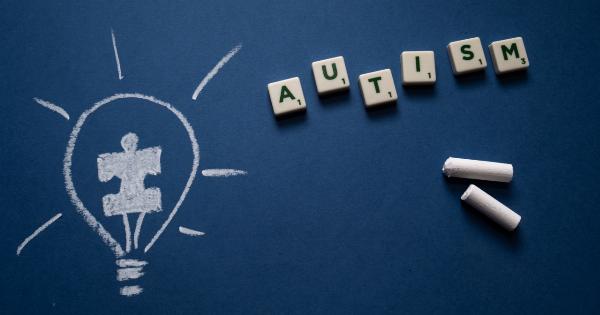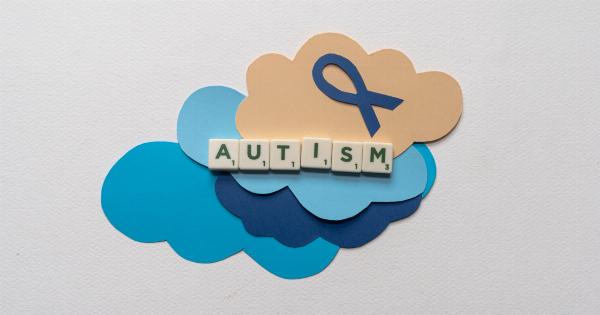Autism, also known as Autism Spectrum Disorder (ASD), is a complex neurodevelopmental disorder that affects how an individual perceives the world and interacts with others.
It is characterized by difficulties in social interaction, communication challenges, and repetitive behaviors. Autism affects people from all ethnic and socioeconomic backgrounds, and its prevalence has been increasing in recent years. In this article, we will explore the key aspects of autism, including its symptoms, causes, diagnosis, and treatment.
Symptoms of Autism
Autism presents itself differently in each individual, and its symptoms can vary in severity. Some common signs of autism include:.
- Impaired social interactions: People with autism often struggle with understanding social cues and have difficulty forming and maintaining relationships.
- Communication difficulties: Many individuals with autism have language delays or impairments, and some may not develop speech at all.
- Repetitive behaviors: People with autism may engage in repetitive movements, such as hand flapping or rocking. They may also exhibit intense and highly focused interests in specific topics or objects.
- Sensory sensitivities: Individuals with autism may be highly sensitive to sensory stimuli, such as noise, light, or touch. They might also have unusual reactions to sensory input.
Causes of Autism
The exact causes of autism are still not fully understood, but research suggests that a combination of genetic and environmental factors contribute to its development.
While specific genes have been linked to autism, it is believed that multiple genes are involved, making it a complex genetic disorder.
Environmental factors, such as prenatal exposure to certain medications or toxins, prematurity, and low birth weight, may also increase the risk of autism. However, it is important to note that these factors alone do not cause autism.
The interplay between genetics and the environment remains an area of ongoing research.
Diagnosis of Autism
Diagnosing autism involves a comprehensive assessment conducted by healthcare professionals, such as pediatricians, psychologists, or psychiatrists, who specialize in developmental disorders. The diagnostic process typically includes:.
- Observation and evaluation of the individual’s behavior, communication, and social interactions.
- Review of medical and family history to identify potential risk factors.
- Screening tools and standardized tests to assess developmental milestones and identify areas of difficulty.
- Collaboration with other specialists, such as speech therapists or occupational therapists, to gather additional information and insights.
Treatment and Support for Individuals with Autism
While there is no cure for autism, early diagnosis and intervention can significantly improve an individual’s quality of life. The treatment and support options for individuals with autism may include:.
- Evidence-based interventions, such as Applied Behavior Analysis (ABA) or Occupational Therapy (OT), tailored to address specific challenges.
- Social skills training to improve communication and interaction abilities.
- Speech and language therapy to enhance communication skills and promote language development.
- Individualized education programs (IEPs) to support learning in school settings.
- Medication, in some cases, to manage associated symptoms, such as anxiety or hyperactivity.
Support for Families and Caregivers
Autism not only affects individuals with the diagnosis but also has a significant impact on their families and caregivers. Seeking support and information is crucial for families navigating the challenges associated with autism.
There are several resources available, such as:.
- Support groups where families can connect with others facing similar experiences.
- Professional counseling to help parents and caregivers manage stress and develop effective coping strategies.
- Educational workshops and training programs to empower families with knowledge and skills to support their loved ones.
Conclusion
Autism is a complex disorder that requires understanding and support. By increasing awareness and promoting research, we can enhance early detection, intervention, and acceptance of individuals with autism.
It is crucial to embrace diversity and create inclusive environments that enable individuals with autism to thrive and reach their full potential.



























